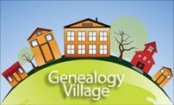William Reynolds Singleton, Grand
Secretary of the Grand Lodge from 1878 to 1901
Brother
Singleton was born in Norfolk, Virginia, October 24, 1818. He
was descended on his father's side from a long line of
distinguished English ancestors, and on his mother's side from
William Bradford, the second Governor of the Plymouth Colony.
His early life was spent in his native city, where he received
an academic education. In 1834 he entered Middlebury College,
Vermont, but left before graduating. The college in after years
conferred upon him the degree of A. M. Adopting the profession
of architect and civil engineer, in 1836 he removed to the then
far West, was engaged for about ten years in railroad
construction and on many public works in Illinois and Missouri,
and for a brief period edited the St Louis Evening Gazette.
Returning to the East ' in 1849, he was employed in his
profession in the navy yards at Norfolk and Pensacola, and for a
time resided in Baltimore. In 1863 he came to Washington, and
was employed by the War Department in the construction of
defenses about the city. At the close of the civil war he was
appointed an examiner in the Patent Office, which position he
resigned in 1873 to engage in business as a solicitor of
patents, in which he continued until a few years before his
death.
Brother Singleton was made a Mason in
Naphtali Lodge, No. 25, of St. Louis, Missouri, receiving the
third degree January 20, 1840, and a few years later became a
member of Independence Lodge, No. 76, of Missouri, of which he
was Worshipful Master in 1848. He served as Senior Grand Deacon
of the Grand Lodge of Missouri in 1842 and 1843. On the
organization of Pentalpha Lodge, No. 23, of this jurisdiction,
May 4, 1869, he became a charter member. In 1875 he was elected
Grand Secretary of this Grand Lodge and continued in that
station until his death.
He was exalted to the degree of Royal
Arch Mason in Missouri Chapter, No. 1, of St Louis, August 20,
1840, and later affiliated with Independence Chapter, No. 15,
which he served as King in 1848. He participated in the
organization of two chapters in this city, LaFayette, No. 5, in
1867, and Mount Horeb, No. 7, in 1872-and was the charter High
Priest of the latter body.
He received the Cryptic degrees in
Missouri in 1841; was a charter member and Thrice Illustrious
Master of LaFayette Council, No. 1, of this city, now extinct,
and was a charter member of Washington Council, No. 1.
He was knighted in Washington
Commandery, No. 1, K T., of this city, June 9, 1875.
He was made an Honorary Sovereign
Grand Inspector-General, thirty-third degree, A. A. S. R., by
the Supreme Council of the Southern Jurisdiction, May 7, 1878.
In the same year he was invested with the Royal Order of
Scotland.
He departed this life February 23,
1901, and his remains were escorted to Oak Hill Cemetery,
February 25, 1901, by his lodge, chapter, commandery,
delegations from other Masonic bodies, and a large concourse of
friends, and interred with Masonic honors by the Grand Lodge.
Special services, in memory of
Brother Singleton, were held by the Grand Lodge December 19,
1901, and a movement at once set on foot for the erection of a
suitable memorial to the distinguished dead which resulted in
the erection of a handsome monument in Oak Hill Cemetery by the
local Fraternity and its dedication by the Grand Lodge July 25,
1903, with appropriate and impressive ceremonies.
The following extract from the
memorial issued and caused to be circulated by Grand Master
Standiford is quoted as perhaps the best pen picture available
of this remarkable man and Brother: "'Paint me as I am!' said
Cromwell, when the artist suggested the elimination of a facial
blemish. No higher tribute can be paid to the memory of Brother
Singleton than to portray him as he was. We have no need to
ascribe to him imaginary virtues, no occasion for the effacement
of blemishes. His character was as near perfection as can be
attained by finite man. Masonry was his life-long study, and his
later years were given entirely to the service of the Craft
Profoundly learned in Biblical and Masonic archaeology, he
traced the history of the Craft from the building of the first
temple down through the Ancient Mysteries, the Essenes, and the
guilds of the Middle Ages to the formation of the first Grand
Lodge, and the evolution from operative to speculative Masonry.
Landmarks, symbols, rites, traditions, law and precedent, custom
and usage, were to him as household words. At fourscore, with
sixty years of Masonic life behind him, he often remarked, 'I am
still learning Masonry.' His contributions to Masonic literature
gave him a worldwide fame, and placed him among the leading
writers and thinkers of the Craft
"Great talents and achievements set
men apart. We view them as on a pedestal, admire them from afar,
but know little of their personal life, habits, and
characteristics. But Brother Singleton was one among us, and his
noble life was an open book to the six thousand Masons of our
jurisdiction, who shared in his joys and sorrows, and to whom
his death is a personal loss. He knew no rank or distinction in
his intercourse with his brethren, but his office was accessible
to all, and his sympathetic disposition, kindly humor, cordial
greeting, and ever ready response to calls for counsel, won the
love and veneration of all. His charities were limited only by
his means, but were known only when spoken of by the
beneficiaries. Possessing strong religious convictions, he was
ever considerate of the views of others. In his broad nature
there was boundless love for his fellow men, but no room for
bigotry or intolerance."
AHGP
District of Columbia

Source: History of the Grand Lodge and
Freemasonry in the District of Columbia, compiled by W. Brother
Kenton N. Harper, 1911.
|

![]()

![]()


